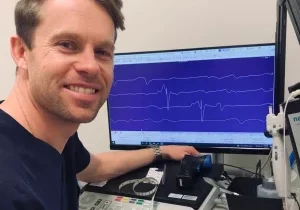Dr. Emanuela Pannia’s Early Career Blog
About Dr. Emanuela Pannia
Dr. Emanuela Pannia completed her undergraduate training in Behaviour, Genetics and Neurobiology (Dr. Robert Gerlai) and her PhD in Nutritional Sciences (Dr. Harvey Anderson) at The University of Toronto (2016-2021). During her PhD, she conducted pioneering research that showed excess intakes of methyl nutrients to be in utero modifiers of central (brain) and peripheral (muscle and liver) energy regulatory pathways predicting later-life health and disease risks. In parallel to her graduate training, she worked at the Zebrafish Core Facility at The Hospital for Sick Children (Toronto, Canada), which is directed and co-founded by Dr. Jim Dowling. Here, she collaborated to create zebrafish models that accurately model a wide range of neuromuscular diseases. She is currently a first-year Post-doc in Dr. Jim Dowling’s lab in the Department of Genetics & Genomic Biology at SickKids. Her project focus is on determining the environmental and genetic modifiers of liver dysfunction in X-linked myotubular myopathy using various translational models; with the overall goal of developing personalized therapeutic options to protect against this devastating disease consequence.
Dr. Pannia is one of the recipients of the NMD4C and MDC postdoctoral research fellowships for 2022, where her research will involve determining the molecular mechanisms and environmental modifiers of progressive liver disease in X-linked myotubular myopathy.
Dr. Emanuela Pannia's Blog
My inspiration to pursue a research career in rare diseases stems from the loss of my sister at the early age of 12 years. At the time, she was one of North America’s first patients with a diagnosis of a rare genetic liver disease. Today, investigational therapies, including a combination of enzyme replacement and nutritional therapeutics, have been approved, with curative gene therapy being a promising future achievement. It is through this experience that I have seen the dedication, compassion, innovation, and interdisciplinary collaboration that is needed to support patients with rare diseases, as well as their families.
To date, my career path has been non-linear, serendipitous, and overall, an exciting adventure. I received training in Psychology, Genetics and Nutritional Sciences, by which each provided a unique perspective on genetic and environmental modifiers of disease progression. My graduate studies, under the stimulating guidance of Dr. Harvey Anderson, emphasized the important relationship between whole body systems and the impact of the early life nutritional environment in predisposing towards later-life diseases. One of the most valuable life/research lessons I learned under his guidance was to always be curious and think laterally. This has truly made a difference on how I approach research questions. Throughout my graduate studies, I was also a part-time member of the Zebrafish Core Facility at S under the inspiring direction of Dr. Jim Dowling. Dr. Dowling is an innovative leader in the neuromuscular field, and he aims to answer patient-driven research questions. He has, and continues to be, a mentor and role model guiding my career choice. I am grateful to be under his guidance. Ultimately, it was through this opportunity that I developed a natural enthusiasm towards understanding the crosstalk that occurs between the muscle and other dynamic organs (e.g., the liver) as well as the environmental triggers during early life that may contribute to primary and secondary disease consequences.
My Postdoc study focus is on X-Linked myotubular myopathy, a rare and severe childhood muscle disorder which at present, has no approved therapies. While muscle is the primary tissue affected, patients also exhibit liver dysfunction, but the cause of this dysfunction is completely unknown. Understanding XLMTM liver disease is incredibly important as it directly impacts the response to promising candidate therapies currently on hold. Our research in the Dowling lab is uniquely positioned to identify the underlying mechanisms of liver dysfunction in XLMTM and interrogate the impact of both immunological and dietary exposures during early life on the disease progression. The overall goal of my research will be to combine nutritional, pharmacological and/or gene therapies to deliver personalized treatment interventions to protect against liver disease in XLMTM patients that may be extended to entire NMD community.











